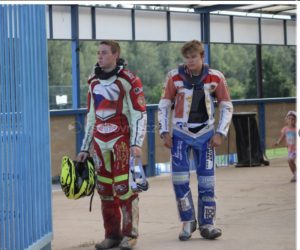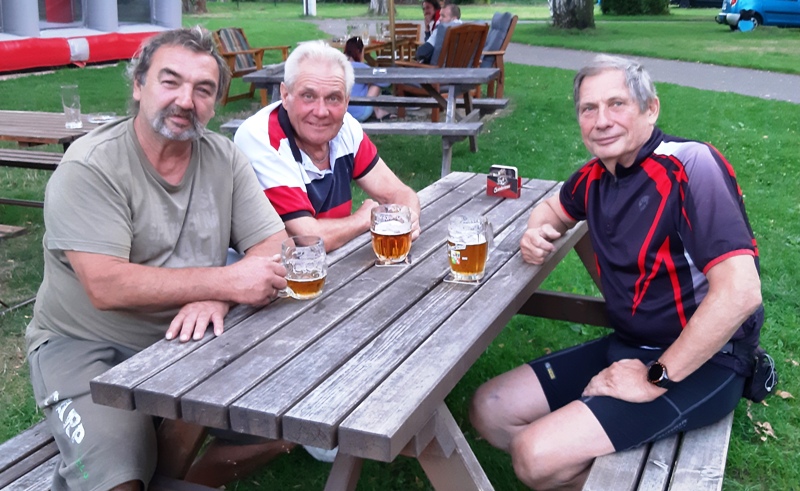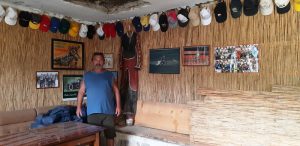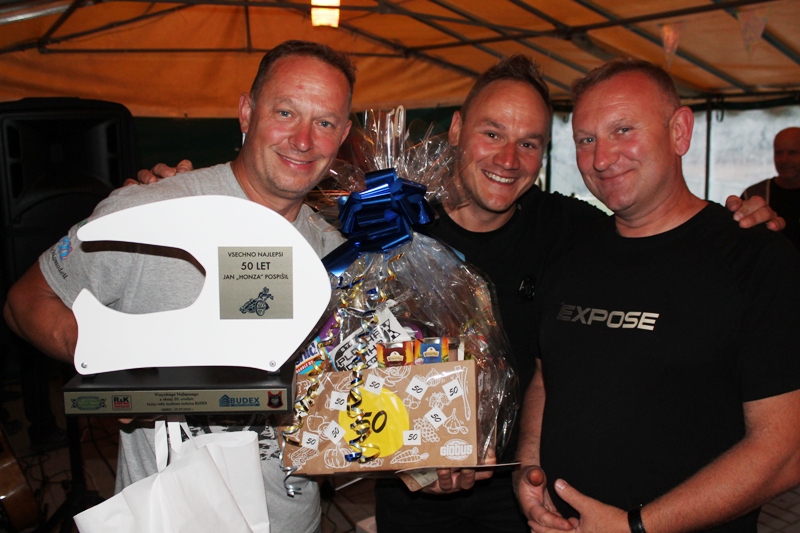Two important races in two consecutive weekends
The racing season continues for the smallest speedway racers and the information below is a continuation of the article from this March: http://www.speedwaya-z.cz/?p=52733. On July 15th, the demonstration race of the new SGP4 class took place in Malilla, Sweden. It was certainly an unforgettable experience for all the selected participants (16 drivers from all over the world) to experience the atmosphere of a Grand Prix at the beginning of their sporting career. A week after this event, the FIM Gold Trophy and FIM Europe 125cc races took place in Gdansk, Poland. These races are recognised as the unofficial European and World Championships for this category. And the Gdansk race was also attended by 6 European riders, participants of the SGP4 race in Malilla.

Information from participants of SGP4 race
For us it was a unique opportunity to learn directly and immediately from the participants of the SGP4 meeting in Malilla, i.e. the riders and their trainers, what kind of motorcycle the SGP4 is and how to race it.
What we were most interested in from the SGP4 participants was the assessment of the suitability of the SGP4 engine for speedway style driving. So here are the experiences of the participants:
The handling of the motorcycle is fully influenced by the characteristics of the engine used. That is, a large displacement engine, high compression ratio and, above all, small motocross crankshaft are fully reflected in the handling of the bike. This means that maintaining a speedway skid is more difficult and any easing off the throttle results in an immediate drop in revs. This is further accentuated by the low range of usable engine speeds limited to 11500 RPM. A rapid drop in revs can lead to the motorcycle straightening out and creating a dangerous
situation. Such situations also occurred during the Malilla race, despite the fact that experienced young riders had
already taken part in the race.
The 190cc engine is heavy, about 5kg heavier than the regular 125cc engines, and is positioned relatively low in the frame. The weight of the engine made it necessary to increase the stiffness of the front fork suspension by adding additional spring elements during the Malilla race. The low engine position is further accentuated by the unsuitably long shifter shaft, which is pushed out to the left side and can dig into the track when the
motorcycle is tilted and the front fork is over-steamed.
Starting the engine the speedway way, i.e. behind the rear wheel, is very difficult. This is due to the large compression ratio, the large displacement and above all the aforementioned small diameter crank mechanism which lacks inertia.
Our comment on the SGP4 motorcycle
The characteristics of the SGP4 are clearly defined by the Daytona Anima 190FSM engine used. Just to repeat, this engine has a displacement of 187.2cc, a compression ratio of 12:1, a 4-speed gearbox and a weight of 21.5kg. The manufacturer doesn’t give performance data, but available tests show a max. power of 22.4 PS/9,800 RPM. The engine speed range is limited to 11,500 RPM.
The engine is primarily intended for use in pit-bike, i.e. hobby
motocross and is designed as such. This means that it has a small crank diameter so that the engine responds quickly to adding throttle with the gas grip.
What about the prices – surprise?
SGP4 motorcycles have been presented as unbeatably affordable from the start. Yet they are offered at an introductory price of 5,000 Euros. For the same amount it is possible to get a motorcycle with a Shupa speedway 2-valve engine, which is already equipped with a large crankshaft. A spare parts offer has also appeared on the
SGP4 manufacturer’s website, where the manufacturer is probably making up for the introductory price.
SGP4 parts are generally 40-60% more expensive than Shupa parts prices. For example, a set of wheels for 780 Eur
(Shupa sells for 477,- Eur), a complete frame for 1057,- Eur (Shupa has it for 770,- Eur).
Comparison of the races in Malilla and Gdansk
In Malilla 16 SGP4 motorcycles were used , in Gdansk there were 28 riders of which 20 had Shupa engines (mostly 2 each). So there were 40 Shupa engines in action. How Saturday’s final looked like can be seen here: Relacja z Indywidualnych Mistrzostw Europy w klasie 125cc (Gdańsk 2023) – YouTube.
Of the six medals that were distributed in Gdansk, five were won by machines with Shupa engines that passed through our workshop. And we congratulate Mieszko Mudlo from Poland and Noah Urda from France for winning the unofficial titles of European and World Champion and for the great representing of Shupa.
Otherwise, of course, Shupa motorcycles do equally well in short track and small bike races. Like here in
Poland: https://www.youtube.com/watch?v=Xsp5gcMYYF0

What to say in conclusion
The SGP4 190cc motorcycle is therefore, in our opinion, due to the characteristics of the engine, only for very experienced riders. Novice riders would have great difficulty in controlling this motorcycle and the suitability of this machine for learning speedway riding is very doubtful. Therefore, the biggest shortcomings of this engine include a small crankshaft with low moment of inertia, a large overall weight and an inappropriately positioned shift shaft, which is compounded by the low positioning of the engine in the frame. It is priced at the normal level,
except for overpriced spare parts.
In comparison, Shupa’s 125cc category engines are designed specifically for speedway use and feature a larger crankshaft, higher RPM and significantly higher cranking inertia, while still achieving similar performance. They are much more suitable for speedway style riding and teaching. In addition, important engine parts are manufactured in Europe under our direct control. Achieving excellent performance with sufficient service life is
then no problem. In addition, they are offered in several development stages, and can be adjusted as the racer’s
experience grows. 500 engines produced and the joy in the eyes of our smallest racers are proof of this.
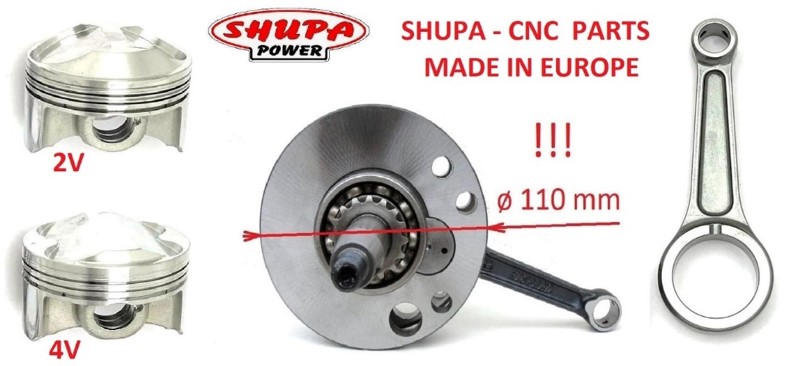
And what’s next…
We believe that coaches, especially those who lead the youth, will easily recognize the above differences and will continue to use 125cc motorcycles for teaching speedway racers with the support of their national federations.
We believe that the responsible officials of the FIM and FIM Europe will be able to positively evaluate the quality of the 125cc category Gold Trophy races, where the results with the contribution of powerful Shupa engines are mainly determined by the skill of the riders, and that these races will continue to be part of international competitions under the banner of the FIM and FIM Europe


